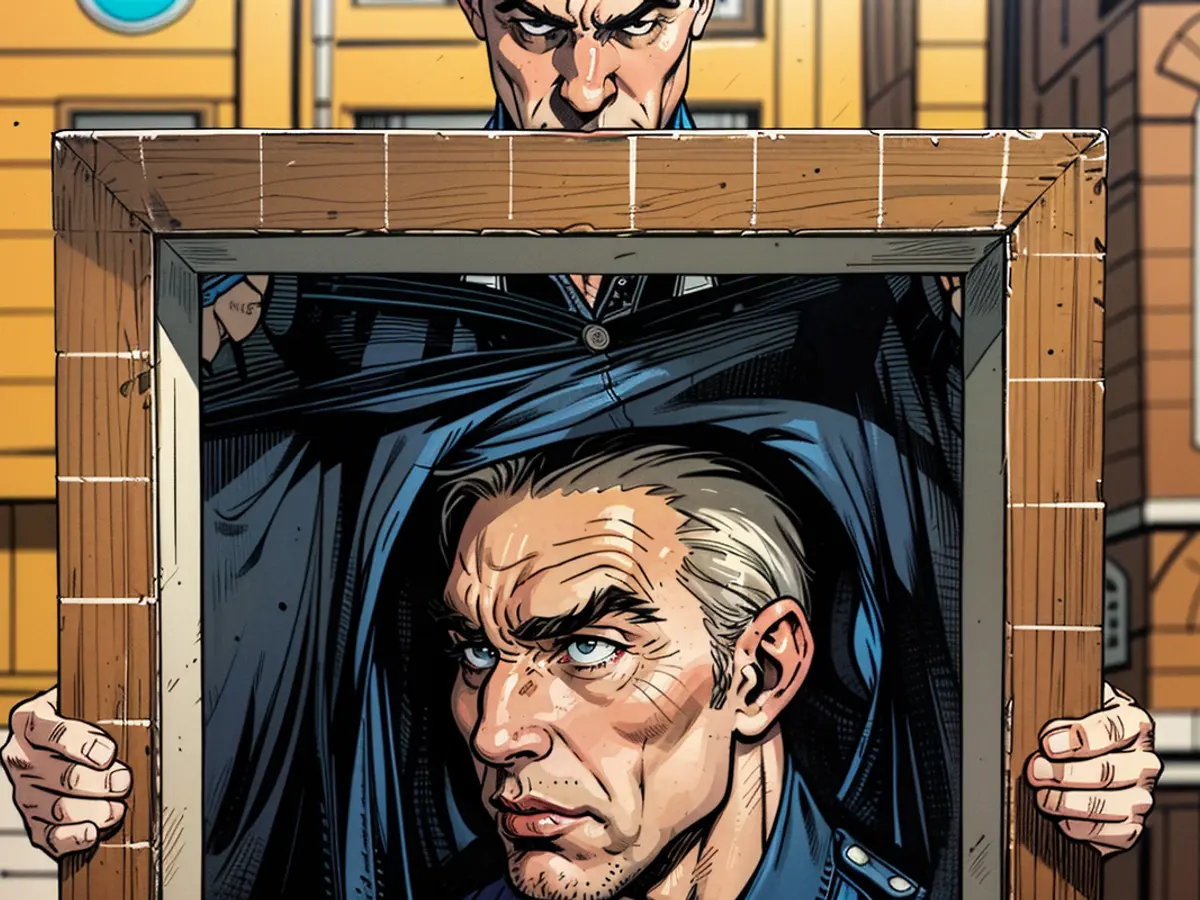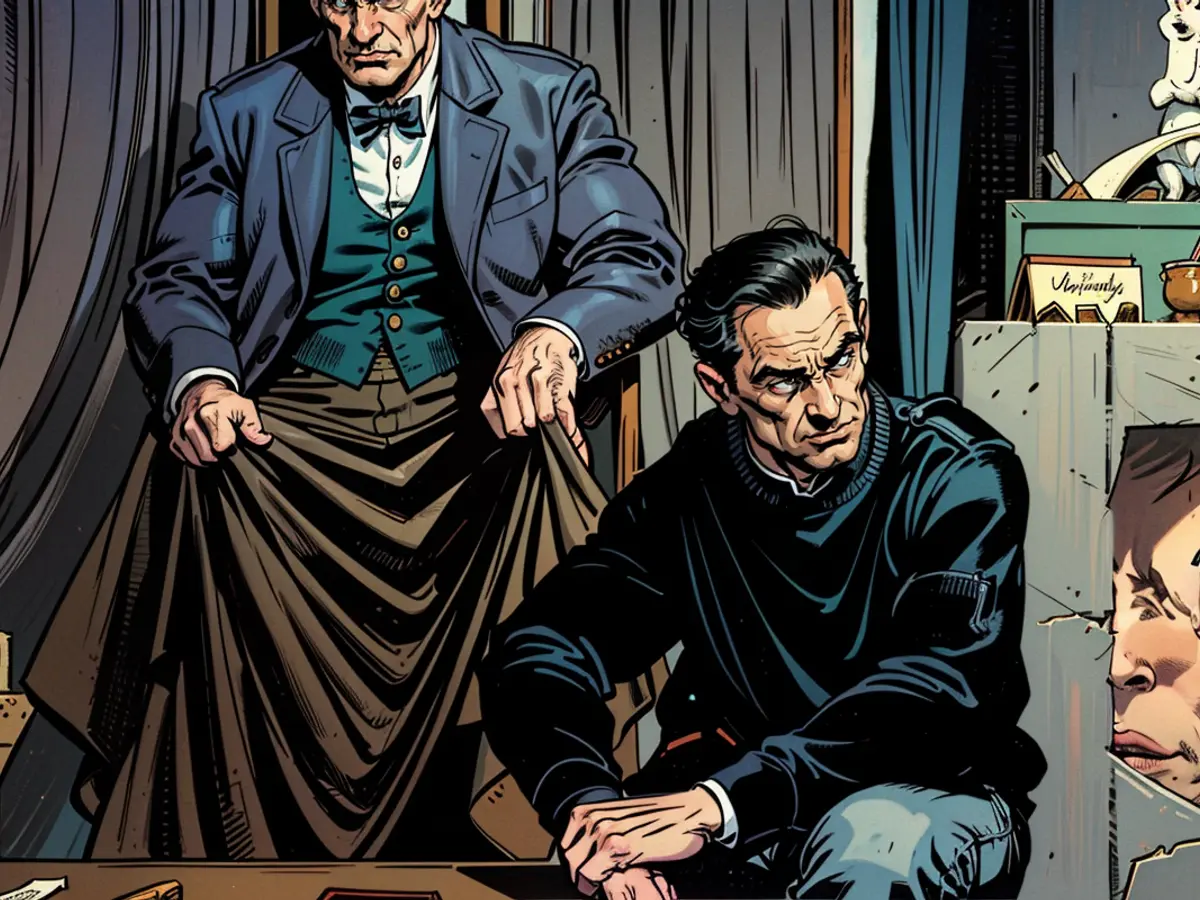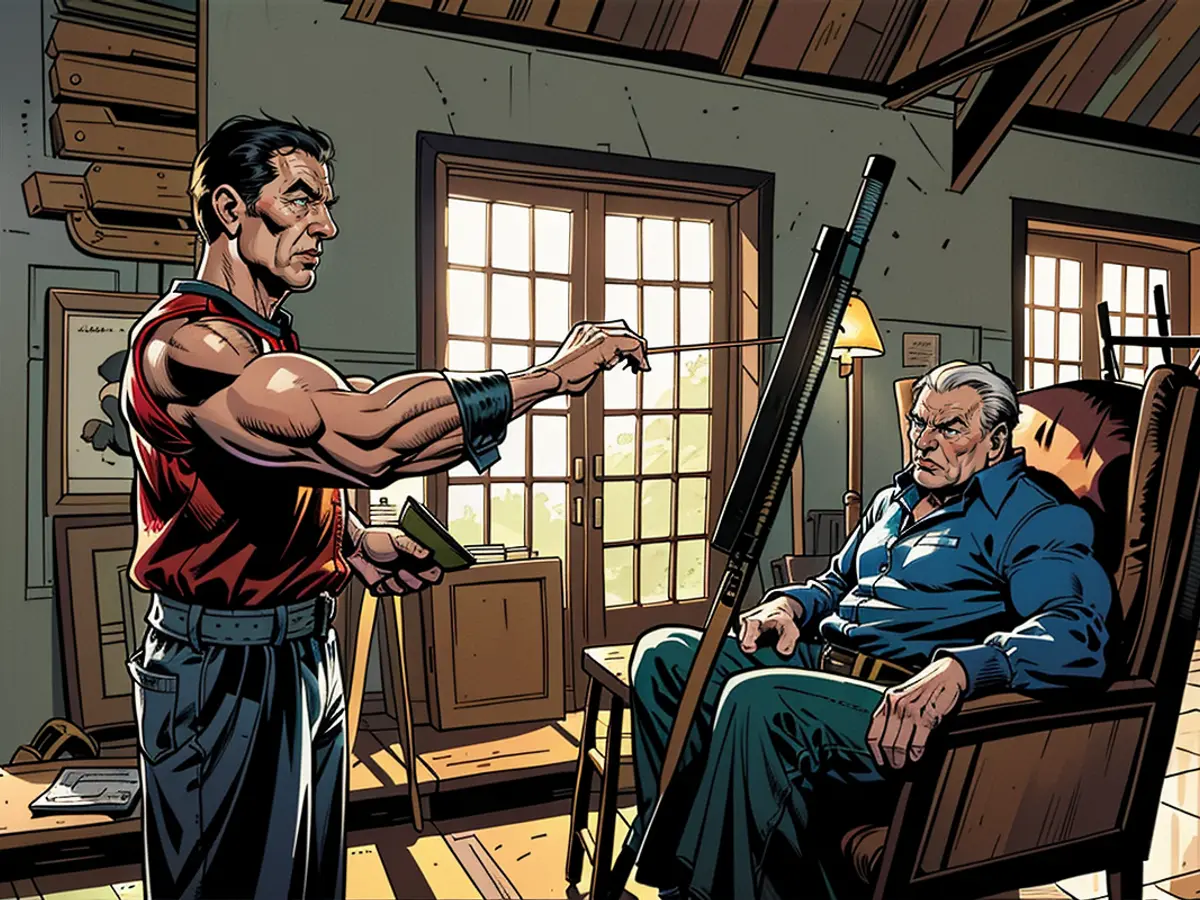Portrait of Churchill despised by him in 'The Crown' series sold for $840,000 at an auction.
Churchill described his appearance in the painting as "a pathetic, broken, and sagging figure". He labeled Sutherland as a traitor, "a Judas using his deadly brush". He considered the entire project to be an attack by the left-wing artists, unpatriotic, and cowardly act.
Ultimately, Churchill's reaction to the painting led to it being burned. This act took place in front of his home, where his wife, Clementine (Harriet Walter), was witness. It's important to note that "The Crown" is not a historical docudrama, but it's true that Churchill deemed the birthday portrait as "filthy" and "malicious" in a letter to his personal doctor, and proceeded to destroy it.
"The Crown" invited Harriet Walter to play the role of Clementine.
Andre Zlattinger, Deputy Chairman of UK and Head of Modern British & Irish Art at Sotheby's, spoke at a press conference regarding the inception of the painting. He mentioned that Churchill's vanity played a significant part in his negative response and the destruction attempt. He suggested that Churchill's election victory in 1951 was a narrow one, and his image was of critical importance. Churchill and Sutherland shared a complex relationship - Sutherland was a friend, but any signs of Churchill's physical decline could have jeopardized his position as a leader.
While the celebrated portrait itself no longer exists, a preliminary study of Churchill - created by Sutherland before finalizing the ill-fated one - was showcased at Blenheim Palace in April. This year marks Churchill's 150th birthday. The study followed Churchill in a more unguarded pose but was rejected by the leader. Sutherland presented the painting to Alfred Hecht, who held it until his death, and the current owner acquired it. It was displayed in both New York and London, heading to auction on June 6. The study reached £660,000, £20,000 less than the initial estimate, but still positioned as the second most expensive portrait of Churchill.
Zlattinger observed that Sutherland created a much closer and unguarded picture of Churchill in the study. "It's a completely different depiction from the other one Churchill didn't like and that was later destroyed."

The act of altering one's image has a long history. Pharaohs in Ancient Egypt had imposed a stylized image on themselves to showcase their power. Hatshepsut, the Egyptian female pharaoh, went as far as depicting herself with a male torso.
The British monarchy is probably the most prominent example of leaders manipulating their image. Queen Elizabeth I distinguished herself from her fellow leaders by never appearing physically aged past her 40s in her portraits. The Rainbow Portrait is the most well-known depiction of her, where her wrinkles were skillfully eliminated.
Queen Victoria took her controlling of her image a step further. She had a strong interest in photography and subsequently became dissatisfied with idealized or inaccurate paintings, arguing for an accurate portrayal.
Maintaining a strong image was essential for the security of these leaders. Blyth emphasized that the public idealizing a monarch would help provide political stability. However, they had to address the underlying uncertainty - a hint of their mortality - to present a more stable front to the people. Elizabeth I was at the end of the Tudor line and thus vulnerable.
Rae added that leaders grasped the importance of how they appeared to the public. They understood that in order to maintain power during times of significant change and potential dissent, they needed to stay in control of their image. Victoria was aware that photography was a growing trend but was less keen on deceptive portraits. Churchill also felt that his appearance was critical, especially during his career's tumultuous rise and fall.

During the Suez Crisis in the early 1950s, there was political turmoil at home, where Stalin had recently died, and the Soviet Union was a looming presence. Churchill had a weak health and political position, and his desire to control his image partially stemmed from wanting to retain power, despite his depiction by Sutherland being a more meaningful and realistic one.
Bryn Sayles, the Head of Sale for Modern & Post-War British Art at Sotheby's, reaffirmed that Churchill was a demanding sitter who wanted to be painted in a specific way during his career. Even in his earlier work, Churchill had these tendencies. Churchill's reputation and health were both vulnerable as the Suez Crisis loomed. These factors all contributed to his destructive response to his birthday portrait.
Historic images of the United Kingdom's royal family have had modifications made to them in the past, but not everyone was content with these changes. In 1950, Swiss historian Alexis Schwarzenbach revealed that Queen Elizabeth, wife of King George VI and mother of Queen Elizabeth II, returned her 50th birthday photo to photographer Cecil Beaton with instructions to lessen the retouching on her lips and chin. In contrast, Churchill reacted quite differently to his own perceived flaws. This reaction is now famously depicted in "The Crown" series - an occurrence that has, surprisingly, piqued the interest of collectors in acquiring Churchill's portraits.
Sayles, a gallery owner, commented, "After the 'The Crown' episode and Gary Oldman's portrayal of Churchill in the 'Darkest Hour' film, we had new collectors coming into the market searching for Churchill paintings due to the increased interest in him." Despite Churchill's displeasure with the attention lavished on his image, the enthusiasm of these buyers suggests that the legacy of one of the UK's most significant figures is far from being put to rest.

Read also:
Despite his criticism, Churchill's disdain for Sutherland's style in arts was evident in his negative comments about the portrait. His destructive act towards the painting highlighted his sensitivity towards his public image in the arts world.
Following the controversy, Seotheby's Deputy Chairman acknowledged that Churchill's vanity played a significant role in his response to the painting, emphasizing the importance of leaders maintaining a strong image in the arts.








